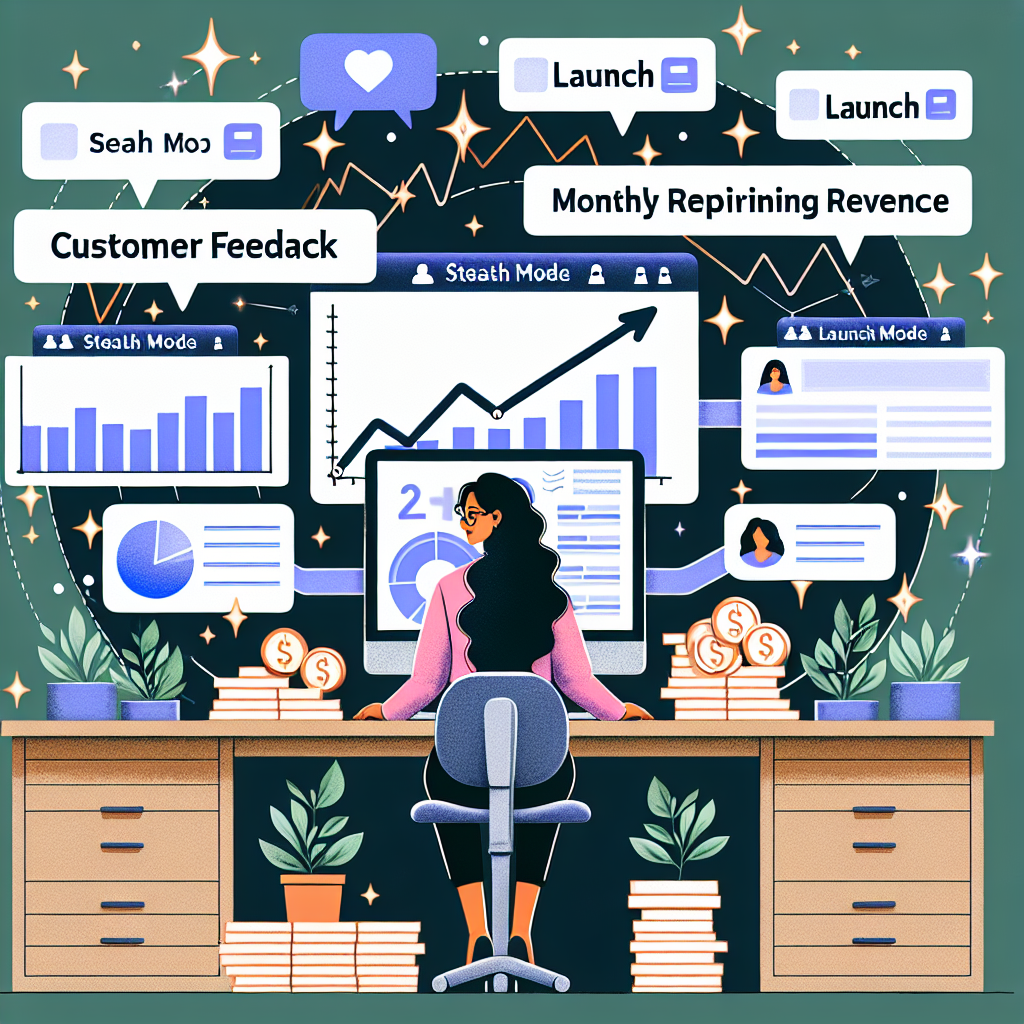Proven B2B SaaS Lead Generation & RevOps Strategies for 2025
This article may contain affiliate links that we get paid on.
Table of Contents
Introduction: Why Lead Generation Pays the Bills
Proven B2B SaaS Lead Generation Strategies
Cold Outreach Best Practices Right Now
Building a Scalable RevOps Framework
How to Optimize SaaS Funnels for Conversion
Smarter Lead Qualification and Pipeline Growth
Using ABM and Precision Prospecting
Improving SaaS Demo Performance
Hard Lessons Learned in Demand Generation
Get Started With Equanax
FAQ
Introduction: Why Lead Generation Pays the Bills
The blunt reality is that every SaaS company lives or dies by its ability to generate leads. About 61% of B2B marketers still rank lead quality as their top challenge, meaning a lack of execution precision leaves revenue stranded. For consultants, marketers, or operators inside startups, the incentive is obvious: turn attention into qualified pipeline, or watch churn erode the entire business model.
Lead generation directly drives sustainability. Predictable pipeline also ensures salaries get paid, not just marketing budgets. SaaS has one multiplier other industries envy: recurring ARR. Fueled by an efficient demand engine, monthly revenue compounds. Think of it like a subscription-based apartment lease: without constant inflow of tenants, rent payments stop. The same rule applies to SaaS businesses - constant inflow of MQLs turns into stability.
This article is structured AMA-style: straightforward, practical, and heavy on what's proven in the trenches. It aims to give RevOps leads, SDR managers, and SaaS marketers clarity on what works in 2025 rather than trends that fade quickly.
Proven B2B SaaS Lead Generation Strategies
The backbone of SaaS success remains multi-channel lead generation. Inbound still matters, but outbound consistently drives the earliest traction. Combining channels produces resilience. Effective programs merge HubSpot inbound campaigns with outbound orchestration on platforms like Apollo or Lemlist.
Unlike generic advice, SaaS often benefits from LinkedIn groups and product-led signup triggers as concrete sources of relevance. For instance, a FinOps SaaS startup drove early outbound success by targeting CFO communities on Slack while supporting inbound registration pages with case-led content. Another real-world play came from an edtech SaaS platform that partnered with niche podcasts, tapping into micro-audiences that boost B2B conversion at 4x the rate of paid ads.
Data is the anchor. Smart targeting extracts ICP segments from LinkedIn Sales Navigator, filters via Apollo, and auto-warms inboxes using Lemlist. This builds credibility and accelerates the response curve while showing how to generate pipeline for SaaS startups that lack brand awareness. Understanding automation ROI for businesses helps optimize these multichannel approaches for maximum efficiency.
Cold Outreach Best Practices Right Now
Cold outreach has not died; it's simply evolved into a data-driven craft. The winning tactic is personalization without crossing into spam. Automation tools in 2025 allow reps to send unique first lines generated from LinkedIn insights. Whereas batch-and-blast emails collapse open rates, customized sequences increase replies by up to 3x.
Timing matters. Setting campaigns on a three-step cadence spaced five business days apart creates balance: enough persistence without overwhelming prospects. Outreach built from intent signals, like recent hiring announcements, drives credibility. Tools like Reply.io and MeetAlfred streamline this process while maintaining personalization at scale.
To maximize deliverability, teams use Lemwarm to maintain sender reputation. Research shows that strategic email warmup significantly improves campaign effectiveness.
Think of cold outreach like professional networking in a co-working hub. If you barge in with a hard sell, people ignore you. Approach with relevant context, and your introductions lead to valuable conversations.
Building a Scalable RevOps Framework
Revenue Operations functions as the linchpin aligning sales, marketing, and success. Without it, organizations default to silos that destroy conversion ratios. A scalable RevOps framework starts by unifying data across CRM, marketing automation, and support tools.
For practical examples from SaaS, refer to Pipedrive pipelines aligned to a HubSpot scoring system, or dashboards that aggregate churn data directly into demand forecasts. Both examples show that RevOps bridges what SDRs chase and what CSMs protect.
Modern RevOps teams leverage workflow automation tools like N8N to connect disparate systems and create seamless data flows. This integration approach, combined with proven RevOps methodologies, ensures data accuracy across the entire revenue engine. Implementing marketing automation workflows for SaaS helps streamline operations and reduce manual touchpoints.
Metrics strengthen the framework: win rate by segment, lead velocity rate, and cost per opportunity created. When automated into dashboards, managers get clarity without drowning in noise.
How to Optimize SaaS Funnels for Conversion
Optimizing the funnel begins with mapping distinct buyer journeys. SaaS buyers do not move linearly; they oscillate between content, demos, and peer reviews before booking calls. Recognizing this helps assign assets to TOFU, MOFU, and BOFU.
Tools like interactive demo platforms enhance engagement while alignment with ABM campaigns tailors experiences down to the account level. A cybersecurity SaaS cut its MOFU conversion gap by embedding secure demo environments that reduced sales cycles. Understanding lead scoring models for SaaS companies helps identify which prospects are most likely to convert at each funnel stage.
Contract creation and signature tools like Pandadocs finalize deals efficiently, ensuring handoffs between sales and operations stay seamless.
Smarter Lead Qualification and Pipeline Growth
Strong lead qualification ensures productivity. Sales teams waste bandwidth if pipeline volume grows without a mechanism to filter intent. In 2025, high-performing SaaS companies increasingly structure qualification around activity signals instead of surface demographics.
Lead scoring models have matured. Dynamic scores that adjust as prospects interact with content provide reps with a clear prioritization system. CRM integrations allow SDRs to receive alerts when attributes reach a conversion threshold, creating high-velocity pipeline flow.
A healthtech SaaS layered technographic data with firmographic filters to isolate hospitals deploying cloud upgrades. This narrowed list cut outreach efforts in half but delivered a 2x increase in demo-to-close ratio.
Using ABM and Precision Prospecting
Account-based marketing remains the most targeted lead generation approach for SaaS. Precision prospecting distinguishes itself by focusing on fewer, higher-value accounts and tailoring outreach to their exact pain points.
Effective ABM programs use multi-channel orchestration. Prospecting starts with insights from LinkedIn, intent platforms, and CRM signals, then extends into coordinated plays like content placement and executive touchpoints.
A SaaS solutions provider targeting enterprise finance teams built a one-to-one campaign mapped to regulatory changes, using tailored reports and webinars as engagement hooks. The resulting pipeline converted faster, proving the ROI of precision.
Improving SaaS Demo Performance
Demo performance in SaaS often determines whether months of pipeline effort culminate in a closed deal. The best strategies emphasize interactive, personalized demos that connect directly to the buyer’s use case.
Preparation is critical. AEs should use pre-demo forms to understand the buyer’s success metrics, then tailor the walkthrough to solve those problems in real time.
Follow-up is just as important. Sending recap emails, demo recordings, and ROI summaries keeps prospects engaged and confident post-meeting.
Hard Lessons Learned in Demand Generation
SaaS marketers consistently learn that overspending on ads without alignment to intent leads to waste. Teams that calibrate creative assets with buyer signals achieve 3–5x better ROI than volume-first programs.
Another lesson: demand generation takes time. Early-stage teams often underestimate conversion lags, creating unrealistic expectations for cash flow. Sustainable demand generation pairs patience with precise forecasting.
Vanity metrics like traffic or MQL counts mislead. True success focuses on conversion velocity, not impressions.
Get Started With Equanax
If your SaaS company is struggling to build pipeline, qualify leads, or operationalize RevOps, Equanax can help.
Our frameworks for B2B SaaS growth combine automation, intent-driven acquisition, and RevOps discipline to build predictable, recurring revenue systems.
Partner with us today to transform your lead generation and scale with confidence in 2025.
FAQ
Q: What is the most reliable B2B SaaS lead generation strategy in 2025?
A: A blended inbound-outbound model that combines content authority with targeted outreach.
Q: How important is RevOps for scaling SaaS revenue?
A: RevOps is critical because it aligns marketing, sales, and success, preventing revenue leakage.
Q: Do cold emails still work in 2025?
A: Yes, but only when hyper-personalized, compliant, and timed strategically.
Q: How can SaaS startups improve demo effectiveness?
A: Focus on interactivity, buyer context, and targeted follow-up materials.
Q: What’s the biggest mistake in demand generation?
A: Prioritizing lead volume over lead quality.
Driving predictable pipeline and optimizing RevOps may seem complex, but with the right framework, SaaS teams can achieve repeatable success. Visit Equanax to build the systems that turn demand into dependable growth.

